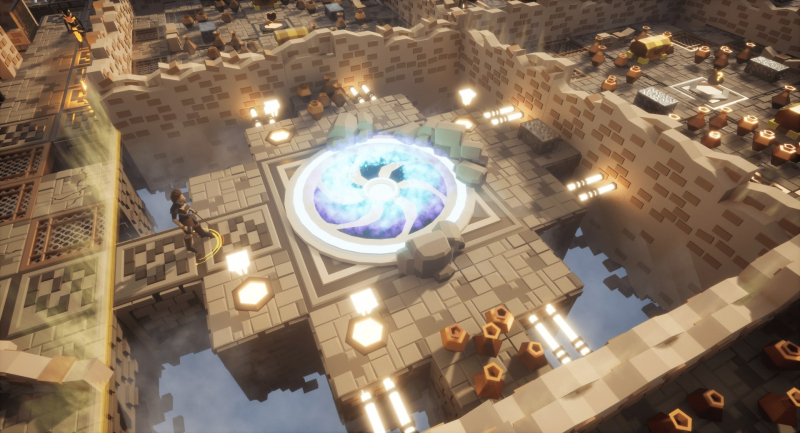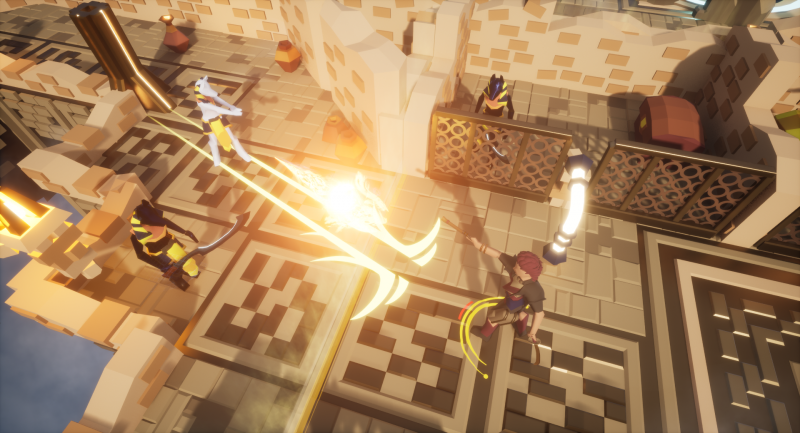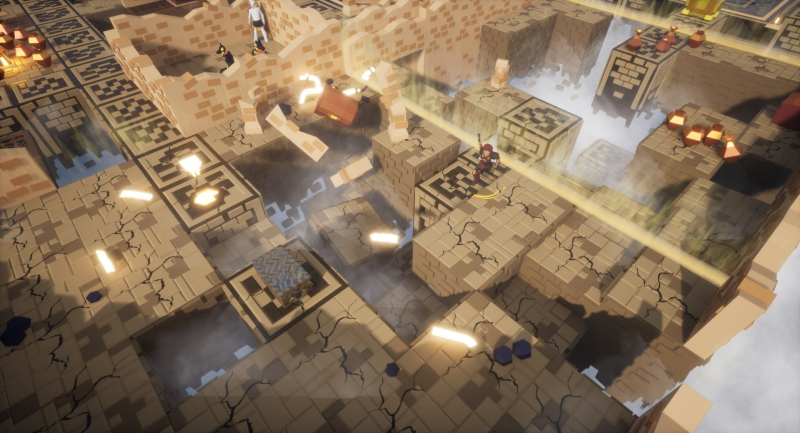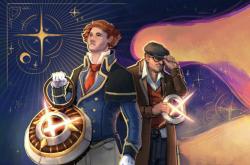Ancient Egypt, pirates, and obstacles
The game was developed by four Master’s students from the Faculty of Digital Transformation: Igor Soldatov, Eduard Shuisky, Denis Baitserov, and Kirill Chernyi. It all started with a project defense at one of the courses. All the participants have had certain experience in game development, so they decided to form a team and develop a game.
They were inspired by the Curse of the Dead Gods and The Binding of Isaac, as well as Hades and Dark Souls. As a result, they decided to stick to the roguelike genre and build the game around the adventures of a pirate girl called Khakira in the floating Ancient Egyptian city Ain Assara.
“The concept changed several times. At first, it was simply about sky pirates in a steampunk setting, but then somehow it was supplemented with ideas related to Ancient Egypt, Lara Croft, and Indiana Jones. Perhaps, this was due to the Curse of the Dead Gods that takes place in an abandoned Mesoamerican temple. Step by step we changed our concept and now it’s about pirates robbing a floating Ancient Egyptian city, which functions on solar energy,” says Igor.
The main character is a pirate who entered the ancient floating city Ain Assara to hunt for treasures, overcome obstacles, and make it out safely. Among the obstacles are not only guards and bosses but also the city itself. It looks solid but actually isn't. Stone plates can be destroyed at any moment and force the gamer to plan their path by entering portals, bombing walls and obstacles and fighting magical guards.
As of now, there are three levels: first, the gamer studies the city, gets used to the gameplay, and finds out how locations work. At the next stage, they have to fight a boss represented by a mechanical tower, each segment of which attacks the player in its own way. The task is to cut off its power sources and make it weaker. At the third level, the gamer finally faces the ancient power itself and has to destroy it.
Development and first players
The team members distributed roles according to their backgrounds. Eduard became a game designer and worked on ideas, 3D models, and animation. He was responsible for the visuals, models, textures, materials, and special effects. Denis was engaged with the character’s skills; Kirill generated the map, portals, and levels; and Igor was responsible for the design of enemies. Above all that, each team member had many tasks to solve, from fixing bugs to creating interfaces.
Everything the player sees in the game can be destroyed – this feature was implemented using the Chaos system of the Unreal Engine. Due to the large number of destructible objects, the developers had to also use the Level Streaming system, which helps load the city’s locations as the player moves forward.
The team used several fascinating solutions, such as the Fight Manager. It makes enemies gather around the player like jackals. This feature made fights more exciting.
Vladislav Petrunin, a graduate of Reshetnev Siberian State University of Science and Technology, also joined the team and created music for the game. He studied ethnic music to recreate the atmosphere of Ancient Egyptian treasuries in his work. He was also inspired by Damjan Mravunac and Mick Gordon, composers who wrote music for many computer games, such as Serious Sam and Doom Eternal.
“When I listened to scores by Mravunac and Gordon, I pictured myself in the middle of an ancient temple and surrounded by enemies. This inspired me and I realized what kind of music I should write for the Tread of Greed,” says Vladislav Petrunin. “Composing is a hobby for me but I’d like to grow in this field. Working on the game helped me gain experience. For example, we decided to use dynamic music that changes once the enemies are nearby. This was my first project of this kind and thanks to Igor and the team I managed to implement it.”
Vladislav came up with the key tune using FL Studio and then selected a timbre and musical instruments to use. He also recorded rhythm sections using a MIDI keyboard and guitar. In the final music, the most notable instruments are qanun, guitar, and flute.
The team presented Tread of Greed at the international business conference White Nights that gathers developers and publishers of gamers, leading experts of the game industry, and representatives of companies. Over 30 people – both gamers and publishers – approved the students’ work. According to the developers, they loved how any part of the location can be destroyed through many ways. The feedback that they received also helped the team to make improvements, make it less hard, enhance controllers, and add new levels and enemies.
The demo version of the game is available here.







